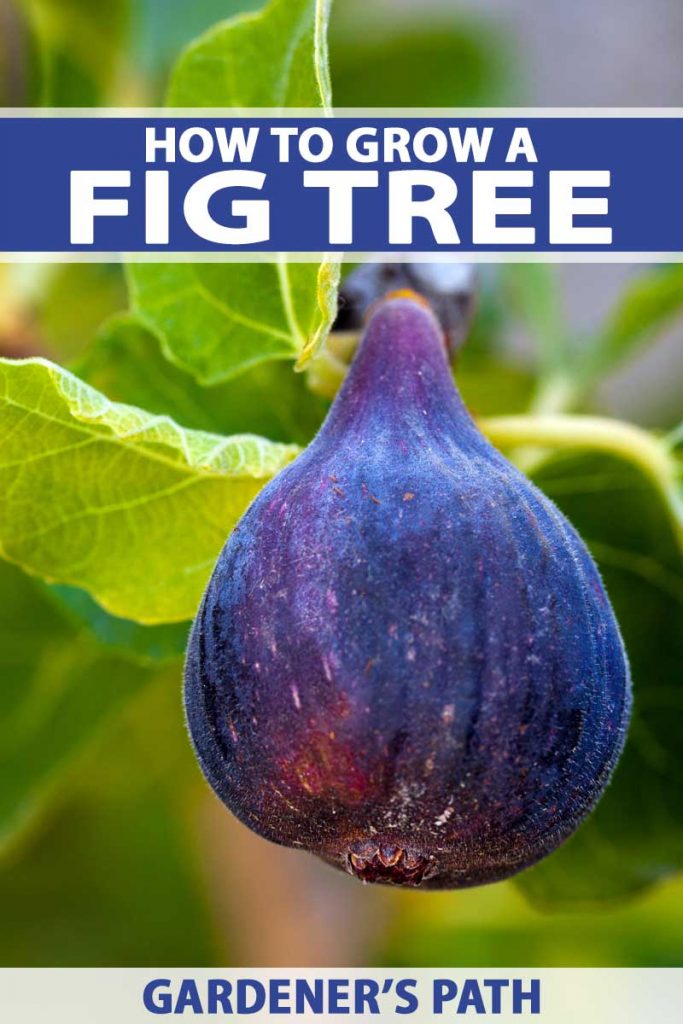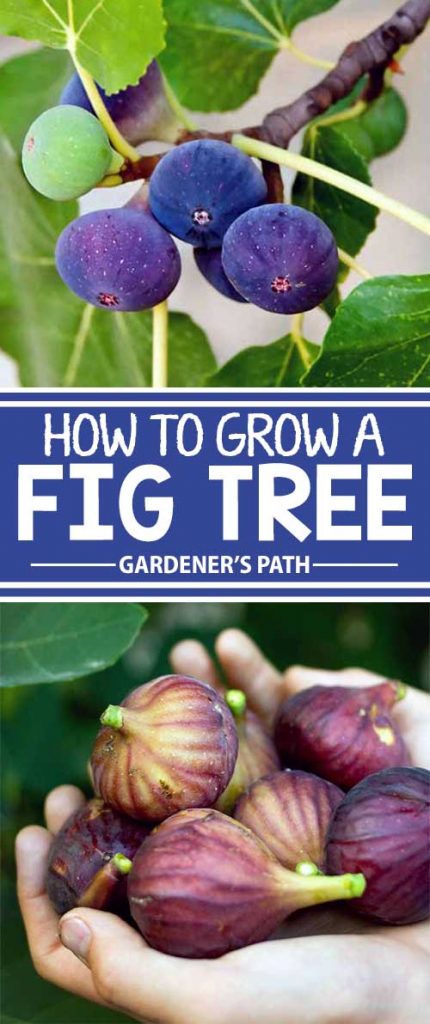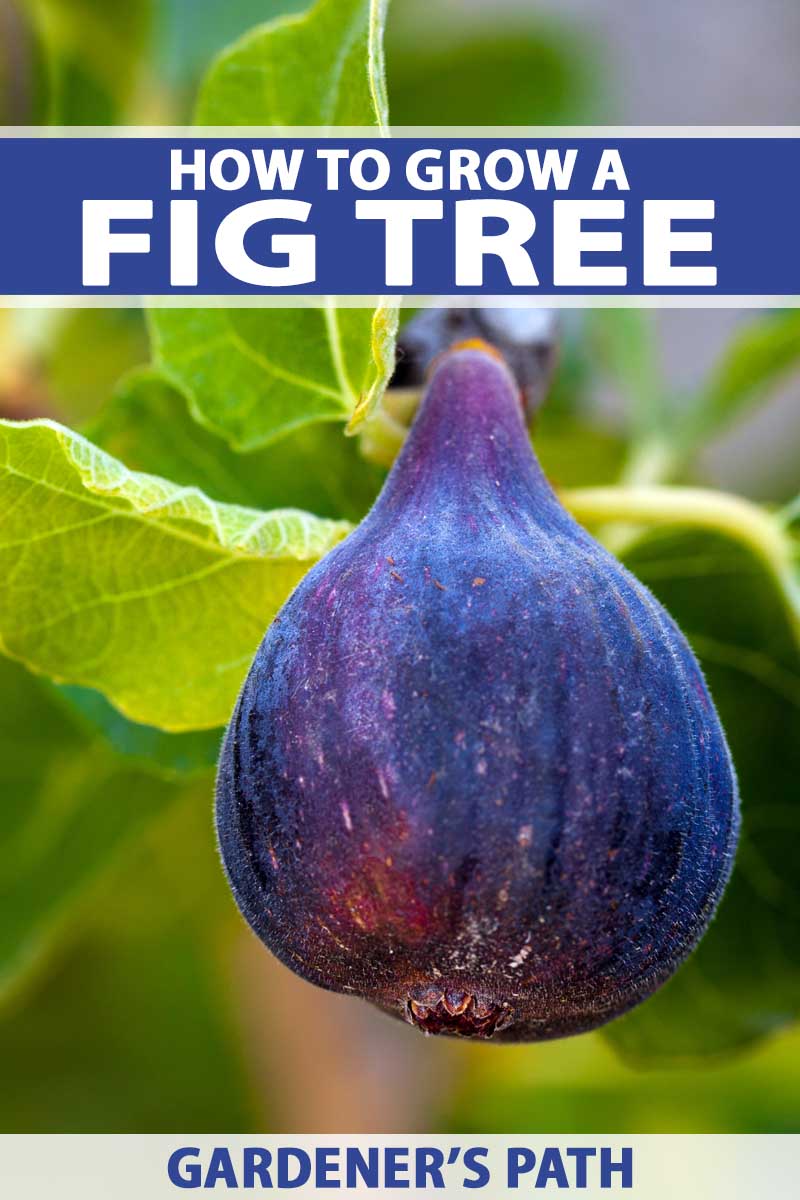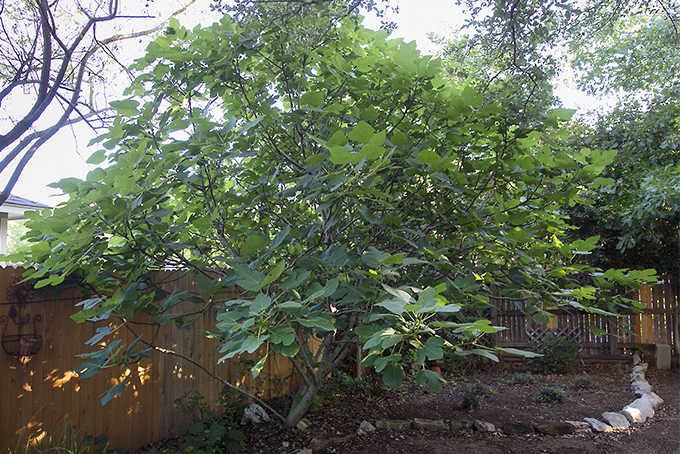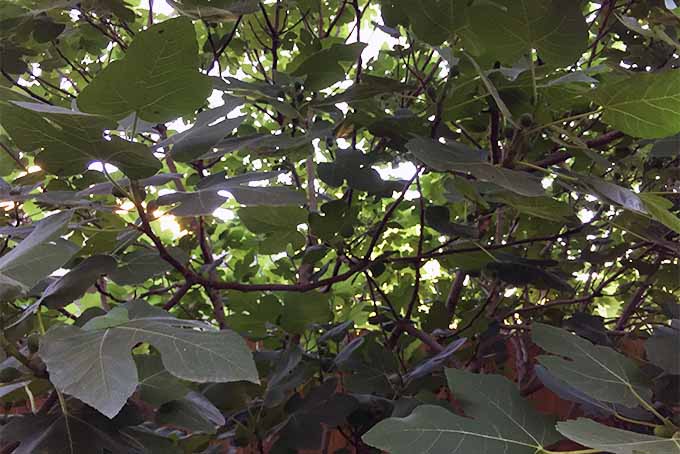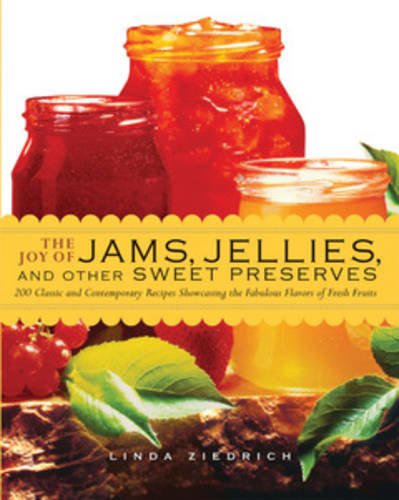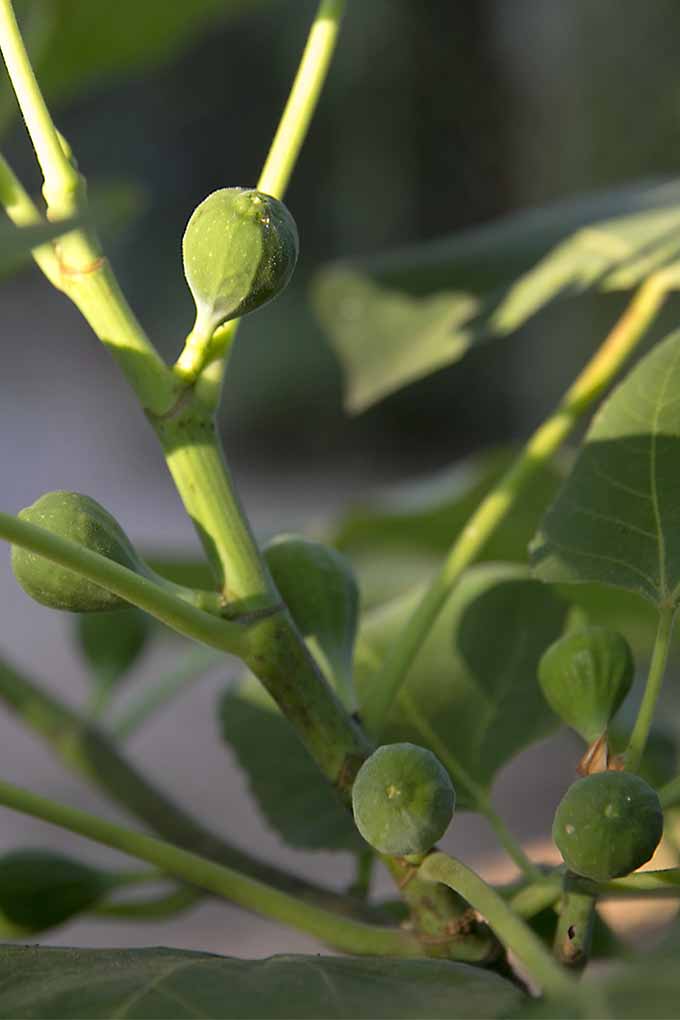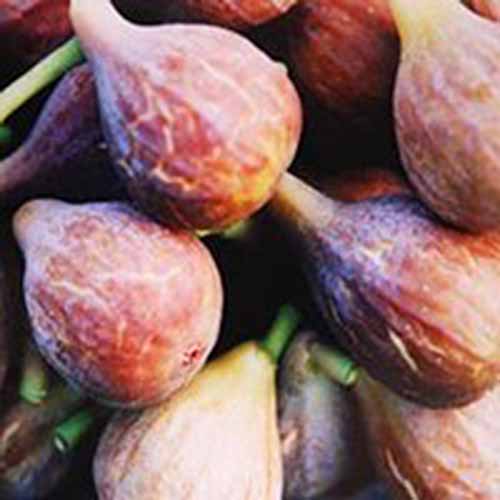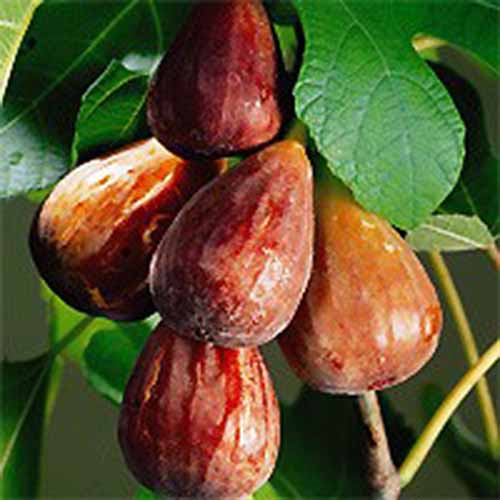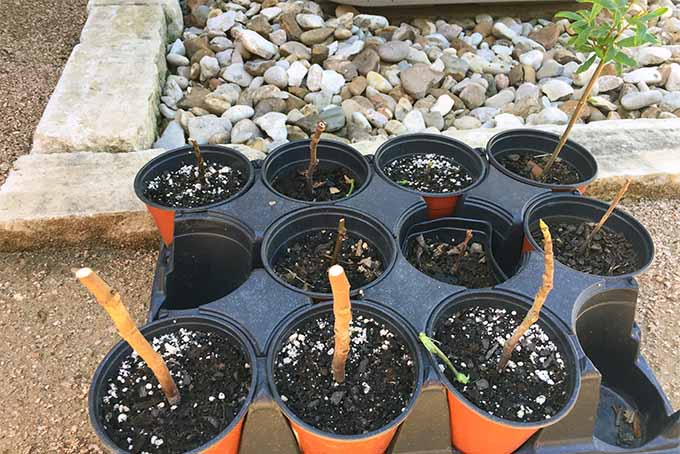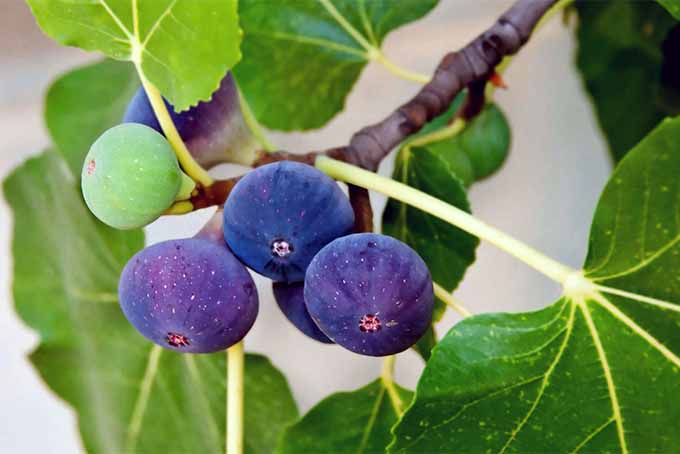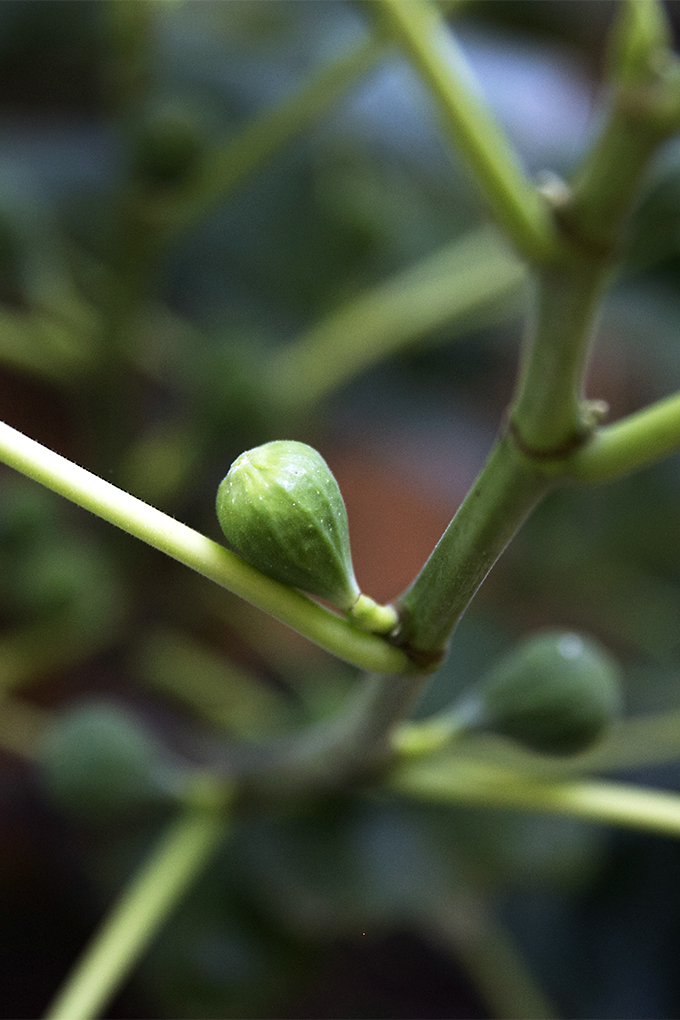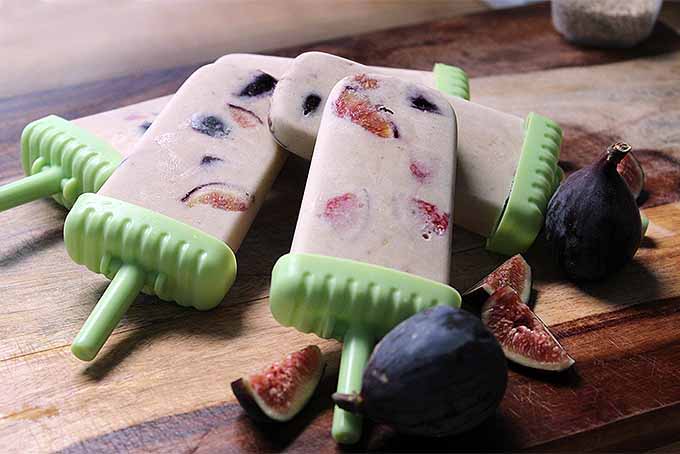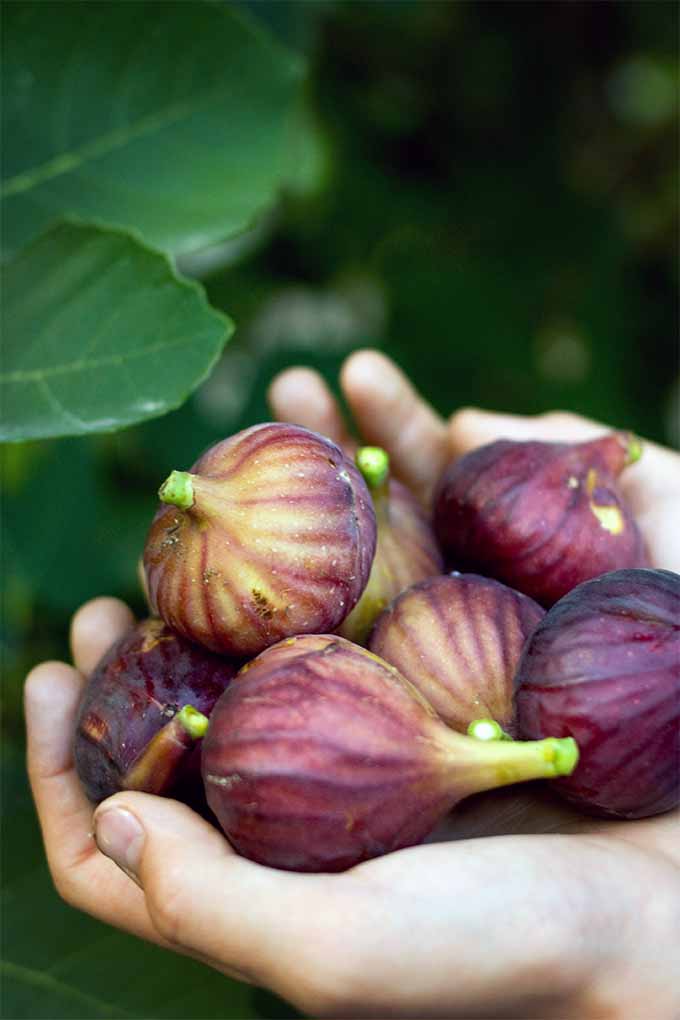The leaves of the fig tree (Ficus carica) are quite lovely – large, beautifully shaped, and generous in their provision of shade. It is entirely unjust that the leaves of this lovely tree have been so maligned throughout history, likely due to their part in the biblical story of Adam and Eve. Any plant that gives us food, beauty, and shelter surely deserves our respect and admiration, rather than our scorn. We link to vendors to help you find relevant products. If you buy from one of our links, we may earn a commission.
Origins
Native to the Middle East and northwestern Asia, the tree was brought to North America by Spanish missionaries in the early sixteenth century. Easy-to-grow figs are among the oldest fruits known to humankind and are members of the Moraceae family, which includes the mulberry. These trees can be left unprotected in USDA Hardiness Zones 8-10. Gardeners in northern zones can grow these plants in containers and bring them indoors when temps drop below 10°F. These trees are relatively fast growing and can grow to 20 or even 30 feet tall, and almost as wide. The deeply-lobed leaves can be four to eight inches wide and as long as 10 inches. The shade provided by their girth and large leaves is well-appreciated. In fact, the founder of Buddhism, Siddhartha Gautama, is said to have found enlightenment while sitting under a fig tree. These trees aren’t too picky about their soil, although they prefer well-drained loam with lots of organic matter. The Joy of Jams, Jellies, and Other Sweet Preserves
What to Buy?
Of the four main types of figs, three – Caprifigs, Smyrna, and San Pedro – are not usually grown by home gardeners, because they have complex pollination requirements. The fourth type, the common fig, is parthenocarpic, meaning the fruit forms without fertilization. Let’s look at a few varieties of this type. One of the most commonly planted fig trees in North America is ‘Celeste,’ available from Nature Hills Nursery. This large beauty is fast growing and produces medium-sized, sweet, juicy fruits that are brownish-purple and ready to harvest in July.
‘Celeste’ Celeste does not produce a breba crop. The fruit is good both for eating fresh and for preserving. Also known as the sugar fig, it’s hardy to zone 6. ‘Brown Turkey’ is another favorite, especially for more northern gardeners as it’s more cold-hardy than some other varieties. You can find ‘Brown Turkey’ available at at Nature Hills Nursery.
‘Brown Turkey’ This tree produces a smaller fruit that is not quite as richly flavored as ‘Celeste,’ but it does often produce a breba crop. And that means figs for everyone! Thrives in Zones 7-9. Super-Southern growers might want to try ‘Black Mission’ – it’s a vigorous grower, but not particularly cold hardy. Nature Hills also sells this tree.
‘Black Mission’ This variety produces two crops of large, rich-tasting, purple-black fruits that are good fresh or dried. ‘Ischia’ is said to do particularly well in coastal California, whereas the related ‘Green Ischia’ is more suited for the South. ‘Ischia’ (Ficus carica), 4-inch Pot
A Sun Loving Tree
Like college kids on spring break, figs like sun. They are happiest with seven to eight hours of full sun during the growing season. When choosing a site for your tree, don’t underestimate its ability and desire to spread out. It might feel a bit crowded if it’s too close to a wall or fence.
Propagation
This species is astonishingly easy to propagate. Simply sneak into your neighbor’s yard in the dead of night, pruners in hand… We jest. Ask permission and take an eight- to 10-inch cutting of wood in early spring. Stick it in a pot of good dirt, with several inches below the surface and one or two buds above the dirt line. Let the cutting grow in the container for a season before transplanting. My own huge tree is the result of my dear neighbor Louie sharing a potted plant he’d propagated from a cutting he snipped from a tree at the side of a road somewhere. When he lost his own tree during the construction of his backyard pool, he came back to our big beauty to take a cutting to propagate.
Planting Tips
Plant figs when they are dormant, in spring. Set container plants three inches deeper than their container depth. If you’re planting bare root plants, cut back the tops to about one-half of their original length.
These plants are fairly drought tolerant, but if things get too dry, you’ll want to give them a drink. These trees generally do just fine without any fertilizing. If it seems your tree is being stingy with its spring leaf development, give it some balanced fertilizer such as 10-10-10 (NPK), according to package instructions, to jumpstart it. These plants require little or no pruning. An ill-placed branch can certainly be removed to unblock a path if needed, of course, in winter. And you’ll want to remove any deadwood.
Pests and Diseases
Squirrels. Grrrrrrrr. We’ll come back to this in a minute.
Other plagues to look for include root-knot nematodes, which are a serious threat to fig trees in parts of the South. The larvae of these destructive pests infect plant roots, inhibiting their ability to absorb nutrients. According to G.W. Krewer, extension horticulturist, and Floyd Hendrix, plant pathologist, both of University of Georgia Extension Service, trees infected by root-knot nematodes cannot be cured with chemical treatment. Krewer and Hendrix suggest pruning the tops to balance the weakened root system, which may prolong the tree’s life. Usually, however, infected plants eventually die. Rust is another blight to be aware of. It’s a fungus that shows up on the underside of leaves as raised, reddish-brown spots. Rust is not usually fatal, and unless it’s an annual problem, spraying with a fungicide is not necessary. Figs are also susceptible to a couple of fungal blights, including leaf and pink blight. Avoid these by using sanitary gardening practices such as applying mulch, cleaning away dead plant material, and disinfecting tools.
Avoiding Fig-Fattened Wildlife
Figs are ready to harvest when the neck weakens and the fruit droops. The ripe fruits will be soft to the touch and the skin may begin to split. And most varieties darken to a brownish-purple color just before harvest time.
You’ll want to grab them at just the right time. Picked too soon, they aren’t yummy – and they won’t ripen once removed from the plant. Here’s the tricky part: You have to time the harvest of the fruit perfectly, so you get them when they’re just ripe, but before the $#&%@#! squirrels get them! Or the birds. Some gardeners cover smaller trees with netting to dissuade wildlife, but this is impractical with large trees. You simply have to be diligent about watching for ripeness and then beating the crafty creatures to the goods.
Fruit Storage
Harvested figs have a fairly short shelf life; store them in the refrigerator for two or three days, tops. To dry these fruits, wash them thoroughly and then dry them with a towel. Place them whole or halved on a wire rack. Place the wire rack on a baking sheet. Put the baking sheet in a 140°F oven for eight to 24 hours. You can also use dehydrator, following the same instructions. Learn more about dehydrators from this article on our sister site, Foodal. You’ll know they’re dry when the outsides become leathery and you don’t see any juice on the inside. They should still be slightly pliable. Store the dried fruit in the refrigerator or freezer in airtight containers for 18 to 24 months.
Recipe Ideas
If eating them like candy somehow gets tiresome, you can preserve the fruits or add them to any number of recipes. This recipe for tahini, honey-roasted fig, and banana popsicles, from our sister site, Foodal, is delicious. These frozen treats are filling and not too sweet. Packed with figs, banana, and tahini, they do double duty as breakfast and dessert. And a sweet fig livens up a fresh salad, too! Check out this recipe for arugula dijon salad with figs, pistachios, and pea shoots, also from Foodal. Or if you have an abundant harvest, check out this recipe for easy fig jam, also from Foodal. You can use your fresh, homemade jam in a hearty roasted chicken panini. Doesn’t that look delicious? You can find the recipe over at Foodal.
Aspersions Aside
Clearly, we are wholly in favor of dismissing any negative connotations of the use of the fig leaf as a cover for things disagreeable. Indeed, the fig is a most agreeable and generous specimen of a plant whose fruit is more than 50 percent sugar. We dare you to cast aspersions on this benevolent beauty. In fact, we ask: Why wouldn’t you plant this species? Northern friends, buy a big pot or consider the ‘Hardy Chicago’ variety. Southern gardeners, select a wide spot. Soon you’ll all be members of the fig fanatics club! And if you’re looking to expand your homegrown fruit repertoire even more, check out these guides next:
Grow Your Own Gorgeous Mulberry Trees How to Grow and Care for Boysenberry Bushes How to Grow Cantaloupe in the Garden
Photos by Gretchen Heber, Kelli McGrane, Kendall Vanderslice, Meghan Yager, and Ralph Barrera © Ask the Experts, LLC. ALL RIGHTS RESERVED. See our TOS for more details. Originally published on February 19, 2019. Product photos via Harvard Common Press, Hirts, and Nature Hills Nursery. Uncredited photos: Shutterstock.
